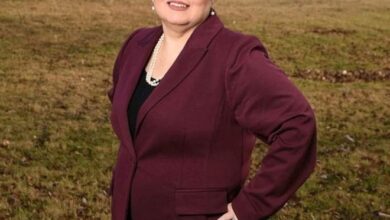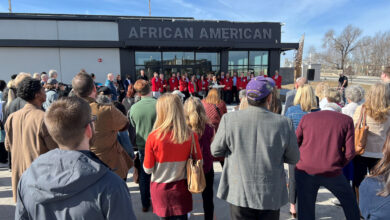In South Los Angeles, a Changed Complexion Since the Riots

LOS ANGELES — When racially charged riots blazed here two decades ago, South Central became a national symbol of rage in a poor black neighborhood.
But the population of the area has changed significantly in the time since the acquittal of white police officers in the Rodney King beating inflamed racial tensions across this city.
Today, immigrants from Mexico and Central America live on blocks that generations ago were the only places African-Americans could live. In the former center of black culture in Los Angeles, Spanish is often the only language heard on the streets.
Now, signs for “You buy, we fry” fish markets catering to Southern palates have been replaced by Mexican mariscos and Salvadoran pupuserias. In the historic jazz corridor, where music legends once stayed when they were barred from wealthy white neighborhoods in the city, botanicas sell folk and herbal remedies from Latin America.
In the 1990s, black residents made up roughly half the population in South Central. Today, Latinos account for about two-thirds of the residents in what is now called South Los Angeles — “Central” was officially scrubbed from the neighborhood’s name by the City Council in 2003. In the 20-some square miles that make up the area, stretching southwest of downtown from the Santa Monica Freeway to the Century Freeway and as far west as Inglewood, there are 80,000 fewer blacks than there were in 1990.
“This is a huge, pivotal shift, as important as any other population change or migration we’ve had in the city,” said Raphael J. Sonenshein, the executive director at the Pat Brown Institute at California State University, Los Angeles, who has studied racial politics in Los Angeles for decades. “It affects the African-American community’s sense of self as it sees a geographic core that really matters to people erode. It changes the whole sense of the neighborhood.”
Even before the civil unrest, as many activists refer to it, there were signs of a changing neighborhood. One oft-cited statistic shows that half of those arrested in the riots were Latino. South Los Angeles still faces the same kind of economic troubles it did 20 years ago: unemployment is high, and those who are able to secure a job typically earn little more than minimum wage. Empty lots dot the streets, a stubborn reminder of the broken promises to rebuild the area after buildings were burned and razed in 1992.
The new buildings that have gone up are mostly thanks either to government or to projects financed by nonprofit or church groups. Crime is down as it is throughout the city, but the dropout rates at high schools remain persistently high. Residents complain of a lack of public transportation and healthy food, though they succeeded in shutting down some of the liquor stores.
For many black residents, particularly those who have been in the area for decades, the changes represent both a loss of history and a sign of upward mobility. Strains lie mostly beneath the surface, typically bubbling up when someone gets angry about construction jobs taken by illegal immigrants who are willing to work for less than minimum wage.
“It’s not that I hold it against them to work,” said Danny Bakewell, a real estate developer and civil rights activist who held protests to shut down construction sites that did not employ blacks. “But if we can’t get jobs and make money in our own neighborhood, where can we get them? This is from where we came; there are other people living in it and they are welcome, but this is our community.”
The changes are evident even at the city’s largest black newspaper, The Los Angeles Sentinel, of which Mr. Bakewell is the publisher. For decades, the paper’s offices were on Central Avenue, the western border of where blacks were allowed to live during restrictive housing covenants and the street that gave its name to the South Central neighborhood. Then in 1993, it moved four miles west to Crenshaw Boulevard, which Mr. Bakewell now calls the heart of black-owned businesses in Los Angeles.
Bordered by freeways, South Los Angeles is made up of many smaller neighborhoods. On the west side they largely remain predominantly black and middle class; farther east are mostly immigrants, who often share housing with multiple families. Home ownership is common; the small stucco houses with wrought iron fences have served as a starting point for first-time buyers for generations of residents.
Starting in the 1980s, many black families began moving to new developments far away from the urban core, buying up affordable and sprawling homes in then-growing cities like Riverside in the east and Palmdale in the north.
Even now, it is easy to spot signs of the deep history of the black community here butting up against change. Across the street from the Hotel Dunbar, once the best-known hotel for black elites, is a mural created in 1984 featuring black leaders, including Biddy Mason, a former slave who became one of the first black women to own land in Los Angeles. At one end of the mural is a small sign reading “Don’t move, improve,” a reminder of the campaign some leaders waged decades ago to stem the tide to the suburbs.
A few blocks north is the Second Baptist Church, the host of several N.A.A.C.P. conventions and speeches by the Rev. Dr. Martin Luther King Jr. and Malcolm X. Today, the church remains one of the most vibrant black congregations in the city, its early Sunday service broadcast on local radio. But few of the members live in the area anymore; immigrants make up roughly half the population in the neighborhood, blacks are around 10 percent.
The church’s preschool program, one of the first in the country created by federal money in the 1960s for low-income families, is almost entirely Latino. The Rev. William S. Epps said that after 25 years as the church’s lead minister, he is convinced the church should stay put. Last year, the church commissioned a study with Esperanza, a local community advocacy group, and the University of Southern California to better assess the needs of neighborhood residents and to create programs for them.
“What we need to be doing is serving the area around us without losing our identity or our history,” Mr. Epps said. “That means we have to serve two different communities, but that can be done.”
Many community leaders here say that aside from improvements in relations with the Police Department, the most positive change since 1992 is the easing of racial tension. Children whose parents might have looked askance at each other have now grown up together; the influx of immigrants has turned into a large population of second-generation Latinos, many of whom want to bring about the same sorts of improvements that blacks have struggled to bring for decades.
Lilian Marenco, 65, who bought a home near the University of Southern California in the 1970s, was at the time one of just a handful of Salvadorans in the neighborhood. She has since rallied with both black and Latino neighbors to open a new park and a grocery store. That sense of cooperation, though, has ebbed in recent years, she said.
“There’s not a great sense of community, people stay in their own worlds until there is some crisis to bring them together,” she said. “It happens with every group. Mexicans say things only to other Mexicans, blacks to blacks.”
And what people say in public, she said, often masks the suspicions that groups harbor behind closed doors. Despite the demographics, nearly all of the elected officials who represent the area are black.
“To some extent there is always unity and there is always tension because there is competition for dwindling resources,” said Marqueece Harris-Dawson, the executive director of Community Coalition, a group that has worked in South Los Angeles for decades. “People can live together and not see things through the lens of race most of the time, because at some point everyone is getting frustrated by the same problems.”
He looked across the street from his office and pointed to a lot whose buildings were destroyed in the riots, where Bill Clinton and other political leaders stood in 1992 promising a dawn of a new economy in the area. The lot has still not been rebuilt.
























































